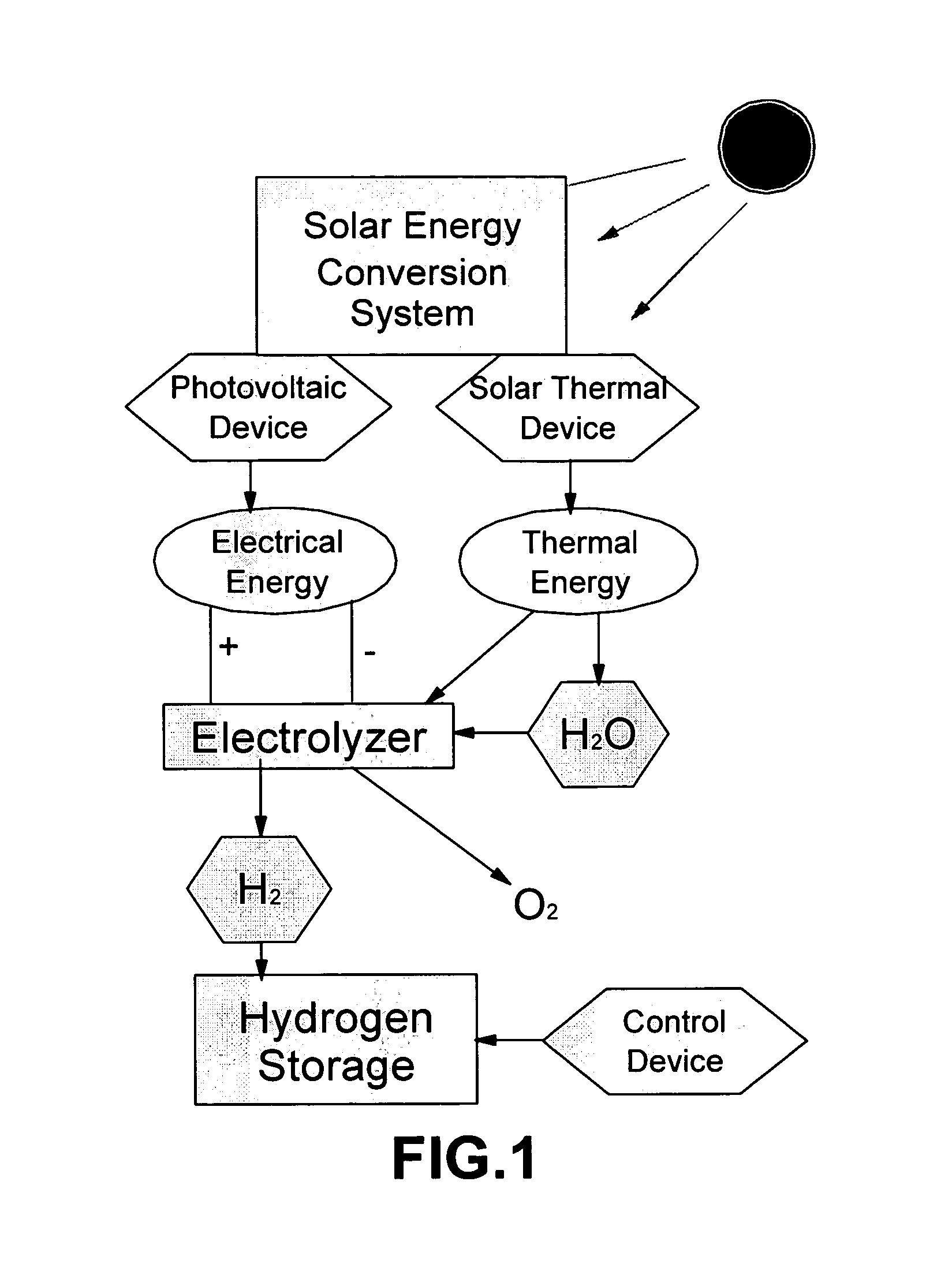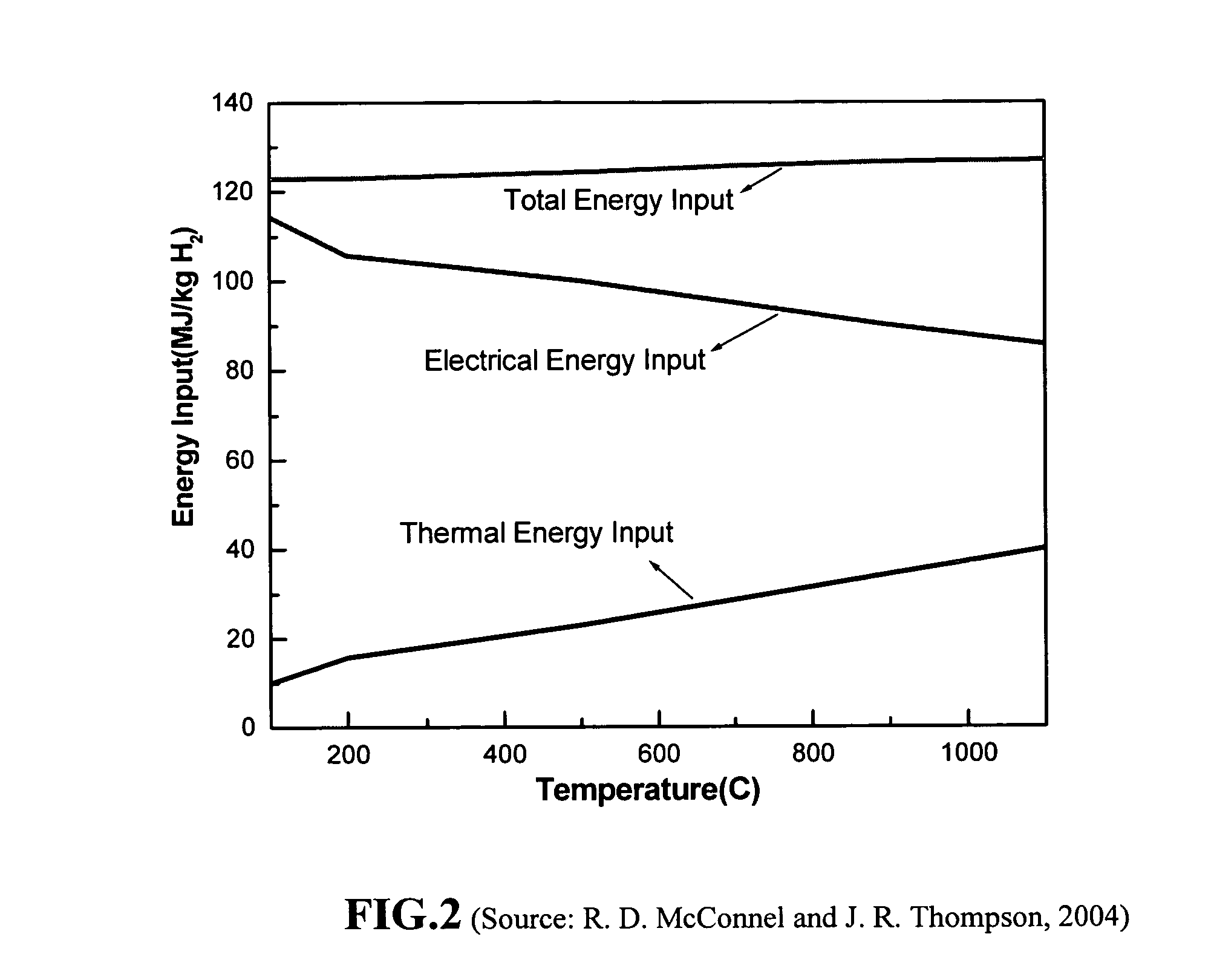Hydrogen generation and storage method for personal transportation applications
a technology for hydrogen generation and storage, applied in the direction of electrochemical generators, greenhouse gas reduction, energy input, etc., can solve the problems of affecting the realization of hydrogen economy, and reducing the efficiency of hydrogen-refueling stations,
- Summary
- Abstract
- Description
- Claims
- Application Information
AI Technical Summary
Problems solved by technology
Method used
Image
Examples
Embodiment Construction
[0029]Described herein is a novel hydrogen generation and storage method for producing and storing hydrogen in a low-pressure container at a home or business site that enables refueling hydrogen to a personal vehicle at a convenient location. The method comprises (a) operating a solar energy conversion subsystem to capture and convert solar radiation into both electrical energy and thermal energy; (b) operating a fuel cell electrolyzer that uses the converted electrical energy and thermal energy to split water into hydrogen and oxygen wherein the fuel cell electrolyzer operates at a temperature between 80° C. and 300° C.; and (c) operating a hydrogen storage means to store the generated hydrogen. The hydrogen storage means preferably comprises (1) a hydrogen storage container comprising a metal hydride, chemical hydride, or other solid or liquid phase material as a storage medium to capture and store the generated hydrogen; and (2) control means to regulate the uptake of hydrogen in...
PUM
| Property | Measurement | Unit |
|---|---|---|
| temperature | aaaaa | aaaaa |
| temperature | aaaaa | aaaaa |
| temperature | aaaaa | aaaaa |
Abstract
Description
Claims
Application Information
 Login to View More
Login to View More - R&D
- Intellectual Property
- Life Sciences
- Materials
- Tech Scout
- Unparalleled Data Quality
- Higher Quality Content
- 60% Fewer Hallucinations
Browse by: Latest US Patents, China's latest patents, Technical Efficacy Thesaurus, Application Domain, Technology Topic, Popular Technical Reports.
© 2025 PatSnap. All rights reserved.Legal|Privacy policy|Modern Slavery Act Transparency Statement|Sitemap|About US| Contact US: help@patsnap.com



